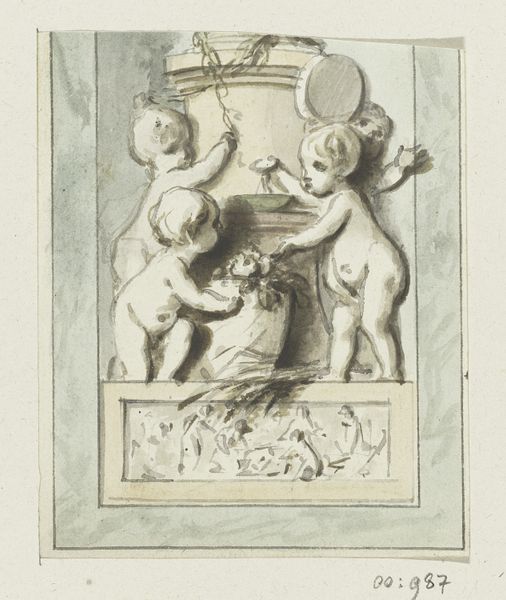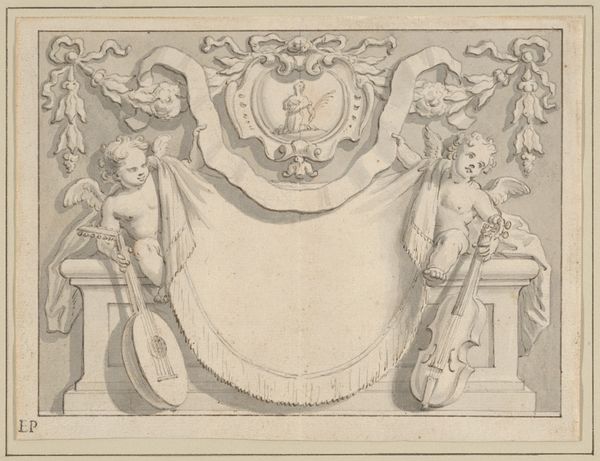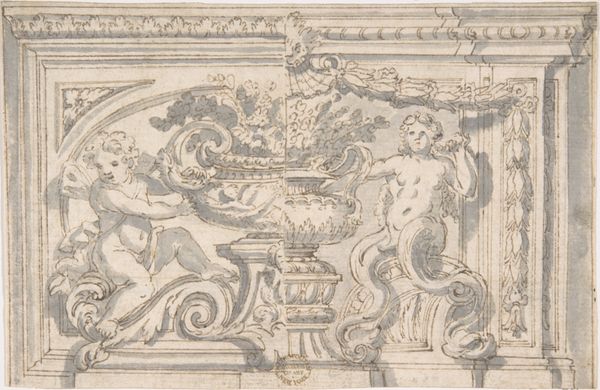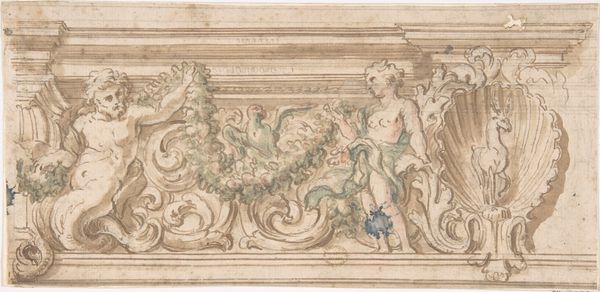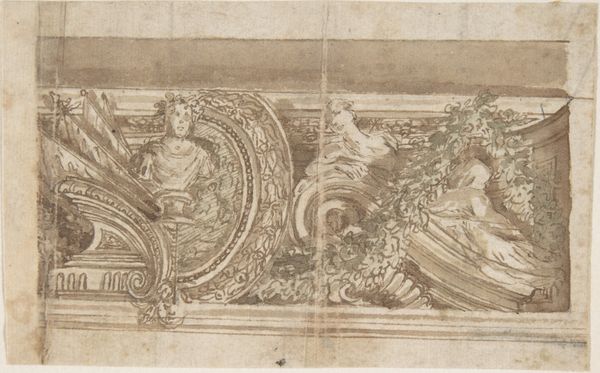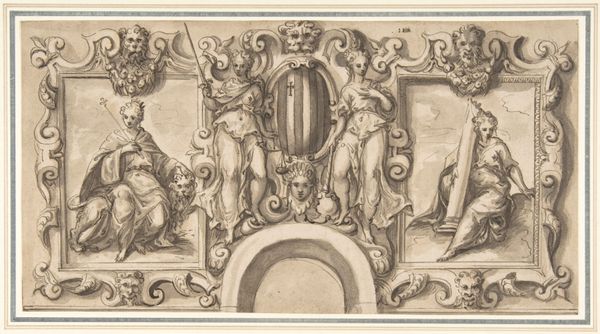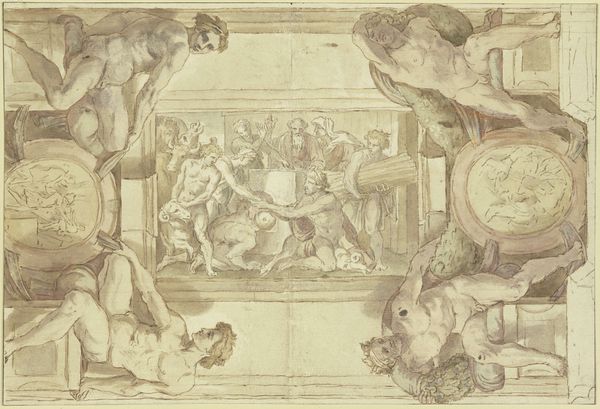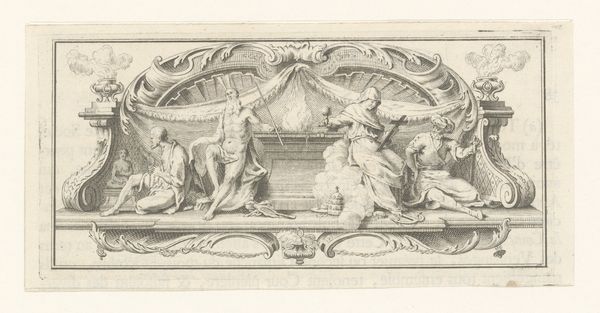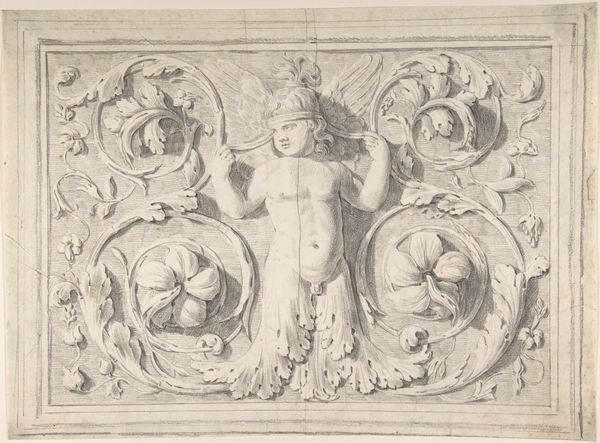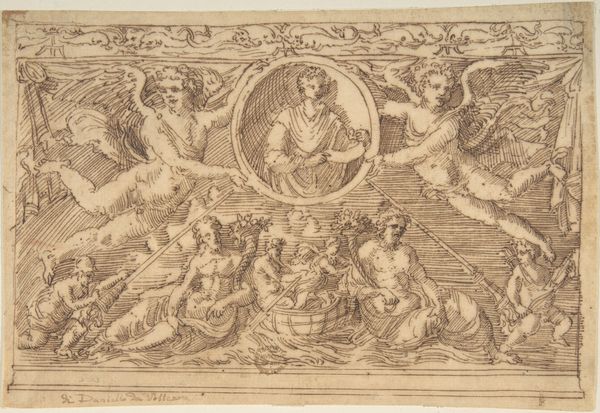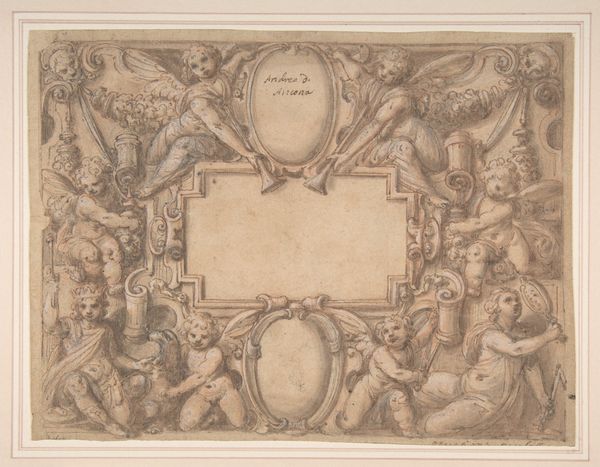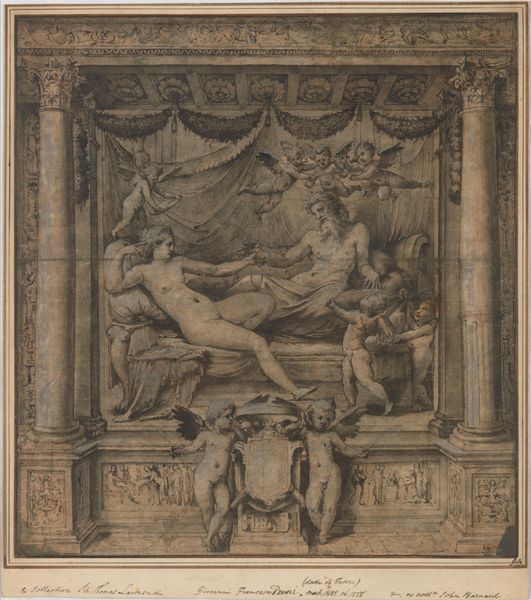
Dimensions: 4 3/4 x 7 5/8 in. (12.1 x 19.4 cm)
Copyright: Public Domain
This is Guillaume Boichot's "Design for Over Door," an ink and wash drawing. Boichot was part of a generation of artists working in France during the Enlightenment, a period defined by reason, science, and a renewed interest in classical antiquity. Here, we see cherubic figures, or putti, rendered in delicate detail. They recline and play around a large vase, all framed by classical ornamentation. These figures and motifs would have been very popular in interior design, reflecting the era’s fascination with ancient Greco-Roman aesthetics. But let’s consider this through a different lens. Who gets to be represented, and how? In Boichot's time, depictions of the body, particularly idealized or allegorical figures, often served ideological purposes. The cherubs, for example, embody innocence and purity, reinforcing certain societal values. But whose values? And who is excluded from this vision? These are the questions that art invites us to ask, prompting us to think critically about the narratives embedded in the images we see.
Comments
No comments
Be the first to comment and join the conversation on the ultimate creative platform.
